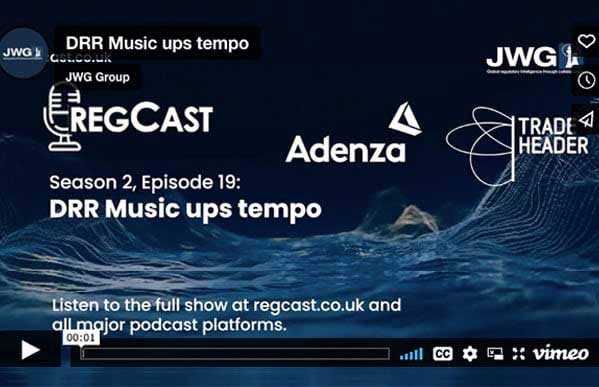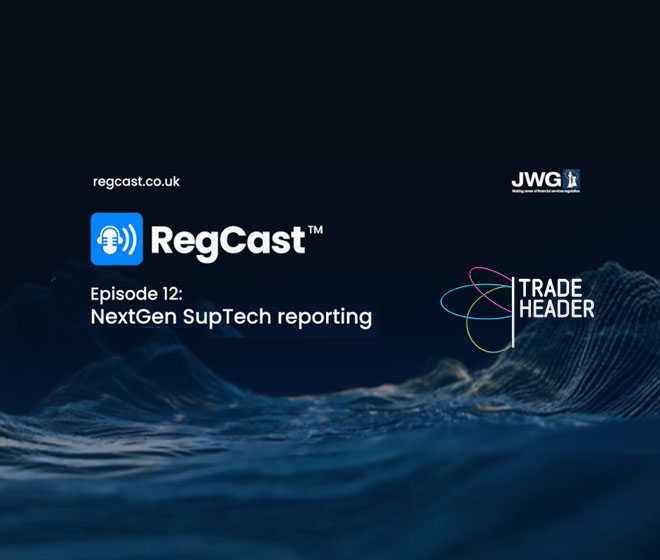ISDA Digital Regulatory Reporting (DRR) implementation is an extremely smart thing to do, but can be tricky to get right. As a co-creator of DRR, we constantly assist businesses in this technical journey, and provide expert training to help develop the practical core knowledge that in-house teams need to make a success of DRR and take advantage of its many benefits.
Of all the questions that we are asked about DRR implementation, certain ones always come up, so we wanted to focus on the top five in our latest blog.
1. What exactly is ISDA Digital Regulatory Reporting (DRR) and why is it needed?
At its core, DRR is the International Swaps and Derivatives Association (ISDA’s) framework built to standardise and automate regulatory reporting for derivatives. It takes complex regulatory amendments and translates them into unambiguous, machine-executable code.
The fundamental need for DRR stems from the immense challenge financial institutions face in keeping pace with the relentless wave of regulatory change across diverse global markets. Manually interpreting and implementing distinct sets of rules for each jurisdiction is not only time-consuming and costly but also prone to variations in interpretation. DRR offers a shared, validated interpretation, allowing firms to align their compliance efforts and adopt common approaches. This common interpretation helps firms ensure they are meeting compliance requirements effectively, acting like a "compliance SatNav" guiding them along the correct path. It also allows firms to verify their approach, ensuring they are aligned with industry best practices.
2. How does DRR relate to the Common Domain Model (CDM)?
The relationship between DRR and the Common Domain Model (CDM) is foundational. DRR extends CDM by adding a reporting layer on top of the CDM components. CDM is a standardised, machine-readable blueprint designed to represent derivatives transactions, processes, and lifecycle events in a consistent format. This standardisation at the data and event level helps reduce discrepancies, operational inefficiencies, and the risk of errors across the industry. DRR leverages this standard representation provided by CDM. It uses CDM to implement the specific reporting logic and validation rules required by multiple jurisdictions. Think of CDM as providing the standardised language to describe financial transactions, and DRR as providing the standardised rules and logic to report on those transactions using that language.
3. How do firms implement DRR and map their existing data?
Implementing DRR involves integrating the framework into a firm's existing reporting systems. DRR is currently distributed as a set of Java libraries that contain the industry-standard reporting and validation logic agreed upon by participating firms. A key technical step for firms is mapping their internal transaction data or existing formats like FpML to the CDM format. This mapping is essential because DRR requires transaction data to be represented in CDM before the reporting and validation logic can be applied. There are currently no open-source implementations for FpML to CDM mapping.
Firms typically achieve this mapping in one of three ways: using commercial translation services such as Rosetta from REGnosys (REGnosys is also in the process of moving its FpML to CDM translation engine to an open source model), employing commercial Extract, Transform, and Load (ETL) solutions, or building their own custom mapping implementation in-house.
Practical implementation steps include thoroughly understanding DRR and CDM's requirements using available resources from ISDA and FINOS, developing appropriate CDM objects from internal data, and potentially running a Proof-of-Concept (POC) to validate the data generation process. Firms are also encouraged to consider the broader strategic potential of CDM for other use cases beyond DRR.
4. What regulatory jurisdictions does DRR cover, and are more planned?
The scope of regulatory coverage is critical for firms operating globally. Currently, DRR covers several major jurisdictions, including CFTC (USA), ESMA (EMIR, EU), JFSA (Japan), FCA (UK), ASIC (Australia), and MAS (Singapore). Firms like JPMorgan have already demonstrated the implementation of DRR for specific jurisdictions such as ASIC and MAS.
ISDA is actively committed to expanding this coverage. For 2025, several additional jurisdictions are in scope for development within the DRR framework, including CSA (Canada), HKMA (Hong Kong), US SEC (USA), ESMA+FCA (MiFIR, EU and UK), and FINMA (Switzerland).
This planned expansion demonstrates the framework's aim to provide a comprehensive solution for global regulatory reporting needs. Furthermore, DRR is designed to produce reports in the ISO 20022 message format, which is increasingly required by certain regulators, such as the Hong Kong Trade Repository.
5. Does DRR include regulatory business validation rules?
Yes, a valuable feature of DRR is the inclusion of regulatory business validation rules. These rules are extracted directly from the regulations themselves and, in some cases, from the requirements specified by Trade Repositories. Including these validation rules within the framework allows firms to check their data and the generated reports against the required standards before submission. This capability is crucial for improving data accuracy and transparency, which are paramount in regulatory compliance. By leveraging these built-in validation checks, firms can significantly reduce the likelihood of errors, rejections, and potential penalties, thereby enhancing confidence in their reporting process. Like a "regulatory lane assist," these rules provide warning signals if a firm begins to stray off course in their reporting.
DRR - Standardise, automate, boost accuracy, and… reuse
Navigating the complexities of derivatives regulatory reporting in a constantly evolving landscape is a significant challenge. The DRR framework, built on the foundation of CDM, offers a strategic approach to standardise, automate, and improve the accuracy of this crucial function. By providing common interpretations, machine-executable logic, and integrated validation rules, DRR empowers firms to manage their compliance journey more effectively and efficiently. Exploring and understanding these key aspects of DRR is a vital step for firms looking to future-proof their regulatory reporting capabilities.
But another key benefit to using DRR is the inherent reusability of reporting data, which our studies have shown is up to 80% in some cases. So once you have done the hard work in implementation of DRR, and meeting compliance in one jurisdiction, you aren’t necessarily starting from scratch with each new regulatory framework you may adopt as you grow.
For more information on DRR Implementation:
- See: Our DRR FAQ page.
- Listen: Marc Gratacos, Founder and Managing Partner, and Aleix Revilla, Head of Consulting Services of TradeHeader discuss DRR implementation and much more on the podcast StreetsTalksTo TradeHeader.
- Or simply get in touch.




